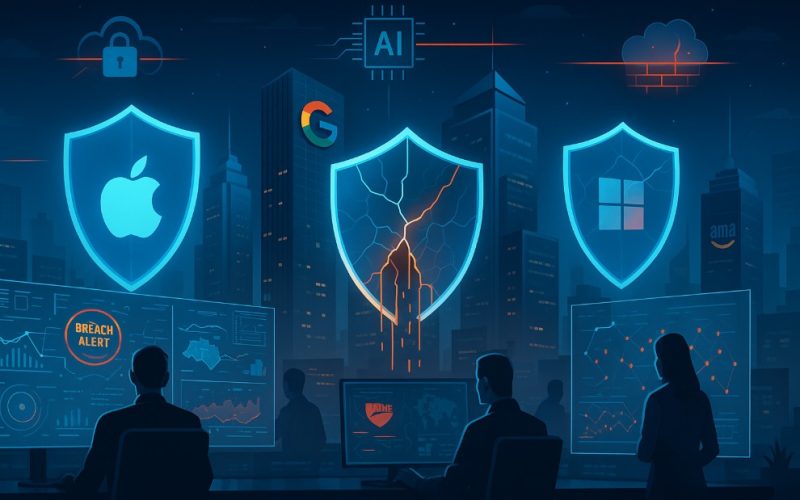In an increasingly connected world, passwords are more than just a gateway to our online accounts they are the front line of defence for our personal identity, finances, and sensitive data.
So when news broke that 16 billion passwords had been leaked, affecting major platforms like Apple, Google, Facebook, and even government services, it sent shockwaves through the cybersecurity community.
This isn’t just another breach; it’s what experts are calling the largest data compromise in internet history. For anyone who logs in to check their email, scroll through social media, or manage finances online, this incident could have far-reaching consequences.
In this blog, we’ll dive deep into the scale of the breach, how it happened, what you can do about it, and what this means for the future of your online privacy.
Let’s uncover the truth behind the 16 billion passwords data breach and find out if your data is already in the wrong hands.
What Triggered the 16 Billion Passwords Leak?
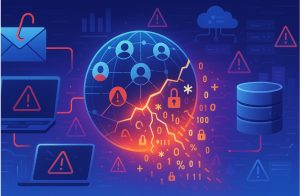
The scale of the breach has stunned even the most seasoned cybersecurity experts. This wasn’t a one-off attack or a single corporate failure. Instead, it was the result of multiple infostealers, a form of malware designed specifically to harvest login credentials, quietly accumulating data over time.
Researchers have confirmed that 30 separate datasets, each containing between tens of millions to 3.5 billion records, were discovered. These were obtained over time through credential leaks, dark web trade, phishing, and malware infections.
Understanding the Source
These exposed credentials didn’t come from one place or time. Instead, they are the result of years of accumulation.
What makes this incident particularly disturbing is that all but one of the datasets are thought to be previously unpublished, meaning the data is not only new but likely current.
The attack didn’t rely on one breach alone. Instead, it leveraged known weaknesses in platforms and user habits, particularly password reuse to compile what can only be described as a blueprint for mass exploitation.
Impact on Tech Giants
Names like Google, Facebook, Apple, and even government agencies are mentioned in the lists, although this doesn’t necessarily mean these platforms were hacked directly.
More often, it means that credentials associated with these platforms were stolen from users through phishing or malware.
The threat is real, and the implications are global. With such an enormous volume of leaked data, the ability of cybercriminals to impersonate individuals or launch credential stuffing attacks has never been higher.
Who Are the Biggest Victims in This Massive Password Dump?
Although the breach doesn’t point fingers at a single entity, the leaked data shows a disturbing pattern: user credentials for the most-used platforms in the world have been compromised.
High-Profile Targets
The affected services include:
- Apple iCloud
- Google accounts (including Gmail and Drive)
- Meta services (Facebook, Instagram, WhatsApp)
- Various banking and financial platforms
- Government login portals
These platforms rely heavily on email addresses for user authentication. Once that email-password combination is exposed, cybercriminals can attempt to reuse the credentials across other services, increasing their chances of successful breaches.
The Risk Beyond the Surface
Many people assume that because they don’t have much to lose online, a breach doesn’t concern them. But this is a false sense of security.
The combination of an email and a password is often all that’s needed to infiltrate other accounts, collect private information, and launch phishing campaigns.
Even users of small platforms or regional services are not immune. These stolen credentials are typically resold in underground markets and used in automated attacks on a massive scale.
Why 16 Billion Passwords Data Breach?
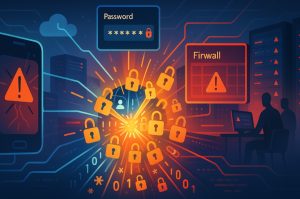
The scale of this breach begs one question why now? Why has such an enormous cache of data surfaced all at once?
The Rise of Infostealers
At the heart of the breach are infostealer malware tools. These tools silently gather login credentials from infected devices, sending them back to centralised repositories managed by cybercriminals. Over time, these repositories grow in size and value.
According to Cybernews, researchers have been monitoring this activity since early 2025. What started as isolated leaks has now exploded into a global crisis, with new datasets emerging every few weeks.
This indicates that the malware is still active, adapting, and spreading.
Breach Timeline
Here’s a simplified timeline of how breaches accumulated to this monumental figure:
| Year | Platform Involved | Estimated Accounts Affected | Breach Type |
| 2013 | Adobe | 153 million | Database hack |
| 2016 | 117 million | Credential theft | |
| 2019 | Collection #1 | 773 million | Data aggregation |
| 2023 | Multiple platforms | 5 billion | Infostealer malware |
| 2025 | Multi-source dump | 16 billion | Credential combo leaks |
As we can see, this breach is not an isolated event. It’s the result of years of weak cybersecurity, reused passwords, and slow user adoption of secure practices.
How Can You Check If Your Password Was Leaked?
While there’s no single way to confirm whether your credentials were part of the breach, there are tools and methods that can help you assess the risk.
Online Tools to Check Password Exposure
Several reliable platforms can help you determine whether your email or password has been compromised:
| Tool Name | Free Version | Alerts | Data Source Quality | Ease of Use |
| HaveIBeenPwned | Yes | Yes | High | Excellent |
| Google Password Checkup | Yes | Yes | High | Excellent |
| Firefox Monitor | Yes | Yes | Moderate | Good |
What Should You Do?
If you suspect your information has been compromised:
- Change your passwords immediately, starting with your email and banking accounts
- Enable two-factor authentication on all critical services
- Avoid using the same password across multiple platforms
These steps will significantly reduce your vulnerability to further attacks.
What Is Credential Stuffing and Why Is It Dangerous?
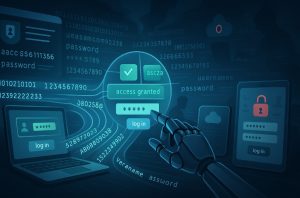
One of the major dangers that comes from leaks of this magnitude is the increased risk of credential stuffing. This method is often used in combination with stolen password databases.
How Credential Stuffing Works?
Credential stuffing is when attackers take large lists of email-password combinations and try to use them across various platforms, assuming that users have reused their credentials.
Because millions of people reuse passwords for convenience, this technique is often alarmingly effective.
The Consequences
When successful, credential stuffing can lead to:
- Complete account takeovers
- Unauthorised financial transactions
- Identity theft
- Access to sensitive health or personal records
Preventing this type of attack starts with strong, unique passwords and multi-factor authentication.
Can You Trust Password Managers After This?
In the wake of such a large leak, many are questioning the reliability of password managers. Are they still safe? The answer is yes if you choose the right one.
Evaluating Password Manager Safety
| Manager | Encryption Type | Cross-Device Sync | Biometric Login | Pricing (2025) |
| LastPass | AES-256 | Yes | Yes | Free/Premium |
| Bitwarden | AES-256 | Yes | Yes | Free/Premium |
| 1Password | AES-256 | Yes | Yes | Paid |
Why You Should Still Use Them?
- They encourage unique passwords for every account
- They reduce the need to remember complex passwords
- They are built with encryption standards far superior to standard storage
While not foolproof, they are still significantly more secure than using the same password across services.
How Do Hackers Use Leaked Passwords?
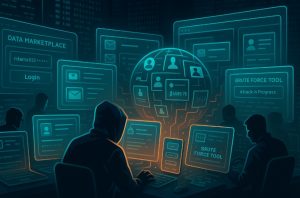
Once passwords are leaked, they don’t just sit in files. They’re actively used, traded, and exploited by criminal networks.
Common Exploitation Methods
- Phishing: Fake emails trick users into entering login details
- Identity theft: Using compromised data to open bank accounts or apply for credit
- Account takeovers: From email accounts to financial services
- Sale on the dark web: Millions of credentials sold for very low prices
Criminals buy access in bulk, sometimes paying just a few pounds for thousands of login details, then use bots to attempt logins on popular sites.
A Human Problem Too
Unfortunately, poor password habits make exploitation easier. Many people still use passwords like “123456” or reuse the same one for multiple sites.
What Immediate Steps Should You Take to Protect Yourself?
The breach is public, but that doesn’t mean you’re helpless. There are a few steps you can take right now to better protect yourself.
Quick Actions
- Use strong, unique passwords for every account
- Switch to passkeys or password managers
- Enable two-factor authentication wherever possible
- Avoid clicking on suspicious links or emails
- Educate yourself and family members on phishing
What About Passkeys?
Tech companies like Google and Apple are now promoting passkeys login methods that don’t use traditional passwords but rely on biometric data or device verification.
Passkeys are considered more secure and user-friendly and may be the future of online identity.
Are Tech Giants Doing Enough to Prevent These Breaches?

While companies like Google, Apple, and Meta have urged users to change passwords and enabled warnings, many believe that corporate responsibility needs to go further.
Corporate vs. Consumer Responsibility
On one hand, tech companies can:
- Enforce better security standards
- Provide transparent breach reporting
- Promote better tools like passkeys
On the other hand, users must:
- Stop reusing passwords
- Enable security settings
- Stay alert to phishing and malware risks
The burden of online safety must be shared.
What Does This Mean for the Future of Online Privacy?
With breaches of this scale now becoming more common, it’s clear that we’re entering a new era of cybersecurity threats.
The Road Ahead
- Biometric login methods will become the norm
- Legislative action may soon mandate security standards
- Cyber hygiene education will become essential in schools and workplaces
This breach is a wake-up call, one that signals the urgent need for individuals and institutions to rethink digital security from the ground up.
Final Thoughts: Is Your Data Ever Truly Safe Online?
The 16 billion passwords data breach is more than just numbers on a screen, it’s a reflection of how fragile our digital lives can be.
While the breach may not have directly compromised every account, the sheer size and scale of the leak mean no one is truly immune.
By taking action now, being aware of the risks, and staying informed, users can do their part in protecting themselves. But ultimately, it’s time for tech companies, policymakers, and users to work together in securing the digital world.
Frequently Asked Questions
What is the 16 billion password data breach?
The breach refers to a compilation of stolen credentials from multiple sources, totalling 16 billion records, making it the largest password leak ever recorded.
Are Apple, Google, and Facebook directly hacked?
Not directly. The stolen credentials are from user accounts associated with these services, collected via malware and phishing attacks over time.
How can I check if my password was leaked?
You can use services like HaveIBeenPwned or Google Password Checkup to check if your email or password is part of known breaches.
What should I do if my credentials were compromised?
Change your passwords immediately, enable two-factor authentication, and consider using a password manager or switching to passkeys.
Are the leaked passwords currently being used?
Yes, many are actively traded on the dark web and used in credential stuffing attacks, identity theft, and phishing campaigns.
Is using a password manager still safe after this breach?
Yes, password managers are encrypted and designed to create unique, strong passwords, reducing your vulnerability to breaches.
How can I protect myself from future data breaches?
Use strong, unique passwords, enable 2FA, be cautious with suspicious links, and stay informed about cybersecurity best practices.





